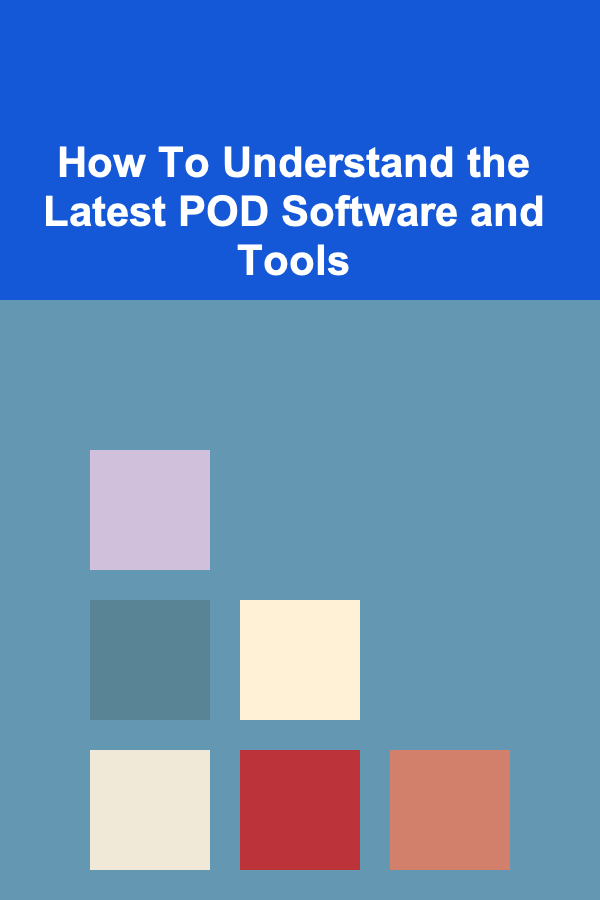
Advanced Operations Research Techniques for Analysts
ebook include PDF & Audio bundle (Micro Guide)
$12.99$11.99
Limited Time Offer! Order within the next:

Operations Research (OR) is a discipline that focuses on the application of advanced analytical methods to help make better decisions. It uses a variety of techniques, including mathematical modeling, statistical analysis, and optimization, to address complex issues in business, engineering, economics, and more. For analysts working in this field, it is essential to be well-versed in advanced techniques that can solve real-world problems with precision and efficiency.
In this article, we explore some of the most advanced operations research techniques that analysts can leverage to tackle complex challenges in various industries. Whether you're working with supply chain optimization, resource allocation, risk management, or logistics, these tools and methods can provide significant value in decision-making processes.
Linear and Nonlinear Programming
Linear Programming (LP)
Linear programming is one of the most widely used optimization techniques. In its simplest form, LP aims to maximize or minimize a linear objective function subject to a set of linear constraints. It is particularly useful in scenarios like resource allocation, production planning, and transportation optimization.
For example, in a supply chain optimization problem, an analyst might use linear programming to determine the optimal amount of raw materials needed from various suppliers, subject to constraints such as delivery times, inventory levels, and production capacities.
Key Concepts in LP:
- Objective Function: A mathematical expression representing the goal, typically in terms of maximizing or minimizing some quantity (e.g., profit, cost).
- Constraints: These are linear equations or inequalities that define the limits or conditions within which the solution must lie.
- Decision Variables: The unknowns that need to be optimized, typically representing quantities that the analyst can control (e.g., amount of product to manufacture).
Advanced Techniques in LP:
- Simplex Method: A widely used algorithm to solve linear programming problems by moving along the edges of the feasible region to find the optimal solution.
- Duality Theory: This concept explores the relationship between a primal problem and its dual. Analyzing the dual problem can provide deeper insights into the problem's structure and sensitivity.
- Integer Programming (IP): This variant of LP restricts some or all of the decision variables to be integers, which is especially useful in problems where the decision variables represent discrete items, such as the number of trucks or machines.
Nonlinear Programming (NLP)
While linear programming deals with linear objective functions and constraints, nonlinear programming (NLP) involves problems where at least one of the objective functions or constraints is nonlinear. NLP techniques are vital in complex systems like financial modeling, engineering design, and environmental management.
Key Concepts in NLP:
- Convexity: A convex optimization problem ensures that any local minimum is also the global minimum, simplifying the problem-solving process.
- Karush-Kuhn-Tucker (KKT) Conditions: These conditions are necessary for a solution to be optimal in constrained optimization problems, extending the concept of Lagrange multipliers to inequality constraints.
Integer Programming and Combinatorial Optimization
Integer Programming
Integer programming is a specialized form of optimization where decision variables are required to take integer values. This method is applicable in situations where the solutions represent discrete choices, such as determining the number of trucks to send, the number of employees to hire, or the number of items to produce.
Key Applications:
- Scheduling Problems: Assigning workers to shifts, allocating resources in projects, or scheduling tasks with resource constraints.
- Capital Budgeting: Deciding which investments or projects to undertake given a budget constraint and a set of discrete project options.
Branch and Bound
One of the most common techniques to solve integer programming problems is branch and bound, which systematically explores and narrows down the search space by solving linear relaxations of the original integer problem. By progressively eliminating infeasible solutions, branch and bound can help find optimal integer solutions.
Cutting Planes
Another technique, cutting planes, involves iteratively adding linear constraints (cuts) to the problem to remove fractional solutions from the feasible region, pushing the solution space towards integer solutions.
Dynamic Programming
Dynamic programming (DP) is a powerful technique used for solving problems with overlapping subproblems and optimal substructure. It breaks down a complex problem into smaller, simpler subproblems and solves each subproblem only once, storing the solutions to avoid redundant calculations.
DP is particularly effective in problems where decisions are made sequentially over time, such as inventory management, shortest path problems, and multi-stage decision-making processes.
Key Concepts in Dynamic Programming:
- State Representation: The condition or decision at a particular point in time.
- Recurrence Relation: The relationship that expresses the optimal solution to a subproblem as a function of the optimal solutions to smaller subproblems.
- Memoization: Storing the results of subproblems to prevent recalculating them multiple times, increasing efficiency.
Applications of Dynamic Programming:
- Optimal Control Problems: DP is often used in resource allocation over time, such as determining the optimal production schedule or investment strategy.
- Shortest Path Problems: Finding the most efficient path between two points in a graph, with applications in logistics, network design, and transportation.
Network Flow Models
Network flow models are a subset of operations research used to model and solve problems involving flow through networks. These models are essential in fields like logistics, telecommunications, and transportation.
Key Problems in Network Flow:
- Maximum Flow: The problem of finding the maximum amount of flow that can be sent from a source node to a sink node in a flow network.
- Minimum Cost Flow: A problem where the goal is to find the cheapest way to send a certain amount of flow through a network.
- Shortest Path: The goal is to find the most efficient path between two nodes in a network, with applications in routing and logistics.
Algorithms for Network Flow:
- Ford-Fulkerson Algorithm: This is a classical algorithm for solving the maximum flow problem by iteratively augmenting the flow along augmenting paths.
- Dijkstra's Algorithm: A well-known algorithm for solving the single-source shortest path problem with non-negative edge weights.
- Bellman-Ford Algorithm: Used for finding the shortest paths in a graph, even with negative edge weights.
Stochastic Optimization
Stochastic optimization deals with problems where some of the parameters are uncertain or follow a probability distribution. This is a common scenario in fields like finance, supply chain management, and project management.
Key Techniques in Stochastic Optimization:
- Stochastic Programming: This technique involves modeling optimization problems where some decision variables are uncertain, and the goal is to optimize expected values.
- Monte Carlo Simulation: A method used to simulate the outcomes of different scenarios in a probabilistic environment. It helps in evaluating risks and uncertainties in decision-making.
- Markov Decision Processes (MDP): MDPs are used in decision-making problems where outcomes are partly random and partly under the control of the decision maker. They are widely used in reinforcement learning, robotics, and automated decision systems.
Simulation and Heuristic Methods
Simulation
Simulation is a powerful tool for analyzing complex systems where analytical solutions are difficult or impossible to obtain. It allows analysts to model the behavior of a system over time and evaluate the performance under various scenarios.
Key Applications of Simulation:
- Queueing Systems: Simulation can model customer service systems, manufacturing lines, or telecommunications networks to understand bottlenecks and optimize resource allocation.
- Supply Chain Modeling: Simulations can provide insights into demand variability, inventory management, and logistics optimization in supply chains.
Heuristic Methods
Heuristics are rule-of-thumb techniques used to find good-enough solutions to complex problems where exact solutions are computationally expensive. While they don't guarantee an optimal solution, they provide quick and effective results in many cases.
Common Heuristic Techniques:
- Greedy Algorithms: These algorithms make the locally optimal choice at each step, hoping to find a global optimum.
- Genetic Algorithms: Based on the principles of natural selection, genetic algorithms use evolution-inspired techniques such as mutation, crossover, and selection to find optimal solutions to optimization problems.
- Simulated Annealing: A probabilistic technique that allows the system to escape local optima by accepting worse solutions with a certain probability, mimicking the cooling process of metal.
Conclusion
Advanced operations research techniques are essential for analysts who wish to solve complex, real-world problems across various industries. By utilizing methods like linear and nonlinear programming, dynamic programming, network flow models, stochastic optimization, and simulation, analysts can gain deeper insights and create more efficient decision-making processes.
Each technique offers a unique approach to problem-solving, and understanding when and how to apply them is key to achieving optimal outcomes. The continued evolution of these methods and the advent of new computational tools ensure that operations research remains an indispensable field for analysts in the modern world.

How to Build a Flexible Riding Schedule for Extra Income
Read More
How to Clean and Sanitize High-Touch Areas
Read More
How to Set Up a Smart Home for Improved Organization
Read More
How To Understand the Latest POD Software and Tools
Read More
How to Use Dividers to Maximize Drawer Space
Read More
Saving Money on Fitness: Cost-Effective Gym Memberships You Need to Know About
Read MoreOther Products

How to Build a Flexible Riding Schedule for Extra Income
Read More
How to Clean and Sanitize High-Touch Areas
Read More
How to Set Up a Smart Home for Improved Organization
Read More
How To Understand the Latest POD Software and Tools
Read More
How to Use Dividers to Maximize Drawer Space
Read More